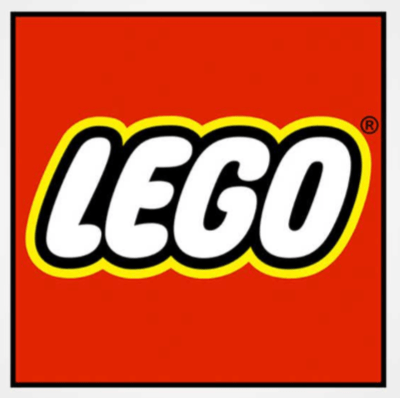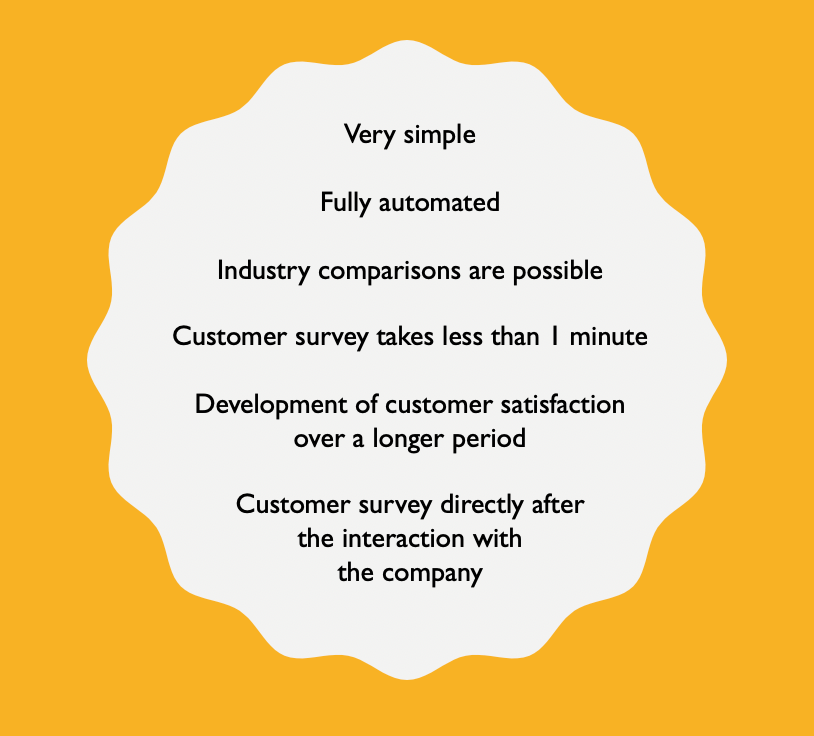Hardly anything influences a purchase decision as much as the opinions and evaluations of other customers.
Note: There is a link to the SPAR NPS dialog at the end of this article. It is a demo version. Your data will not be forwarded to SPAR.
“Do you know in which grocery store I am always addressed by name? That’s right, at the SPAR in our village, the staff is always so friendly.” Customers make experiences and tell others.

SPAR relies on CX (Customer Experience)
Since May 2019, SPAR has been using the NPS customer survey via chat dialog in the approximately 200 SPAR branches. The chat dialog is designed for customer experience and motivates the customer to participate through its interactive way.
In order to enable as many customers as possible to take part in the chat dialog, the dialog is set up in four languages: German, French, Italian, and English.
At the checkout of each SPAR branch, a QR code is displayed with the message ‘Your opinion is important to us’. If the customer scans the code, a chat dialog opens in the browser of his smartphone, in the course of which the customer is asked 3 questions about today’s shopping experience:
- How likely is it that you would recommend SPAR to a friend or colleague? 0= absolutely not, 10= very likely
- What is the main reason for your evaluation?
- What could we do better?
In addition to these central questions, the next step will be to survey the frequency of shopping at SPAR. Furthermore, the customer has the possibility to subscribe to the SPAR newsletter directly via the chat dialog.
What happens to the data collected daily at SPAR?
Thousands of SPAR customers have already participated in the NPS survey. The answers are available to SPAR in real-time on the DiALOGiFY dashboard and are discussed monthly with the branch teams.
The individual SPAR branches receive the NPS report with their customer data monthly via email link.
The Net Promoter System promotes customer focus
Basically, the NPS customer satisfaction survey is not just a measured variable but a whole system. On the way to losing a couple of pounds, no sustainable success will be achieved without accompanying, long-term measures. The same is true of the NPS: Viewing the NPS as a score alone will never improve customer loyalty and lead to more profitable growth. It is the many text comments that provide the context for concrete measures. The NPS system means focusing on the customer in the long term, regularly analyzing the data, and implementing appropriate improvement measures.
I think we all agree on one thing: customer experience plays a key role in successfully differentiating a company in the market. If you want to become a master of the customer experience, you have to understand your customers and align the company with them. This requires the ability to listen and look well; but also the will to change things and consistent measurement of success. In a manner of speaking, continuous change management and employee coaching are required. But where is the best place to start…?
Let’s start with the goal in mind: the image of an ‘ideal world’. How would this world have to function so that we would always be at the forefront of customer satisfaction?
What if …
… you could read your customers’ feedback at any time?
… you would receive a monthly report with the comments and evaluations of your customers?
… you would receive a notification e-mail whenever a customer-rated your company negatively?
… you could contact this customer personally if necessary to discuss the matter?
… you could increase customer loyalty through an active customer dialogue?
… the customers would publish positive comments about your company on ‘Google Reviews’?
… you could inform your customers about special offers at any time?
… you could show customers the fastest way to your shop?
… you could reward your customers for their commitment?
… you could suggest and implement improvements based on feedback from your staff teams?
Yes, how would it be if you could do all this…?
Word of mouth is the best advertisement
Knowing the customers and their needs is crucial for the success of a company. This may be with regard to the products and services offered, store design, opening hours, online services, or the friendliness of the staff. The customer has an opinion on everything. And whenever this opinion is negative, he punishes the company by turning his back on it.
NPS Customer Satisfaction: Get customer opinions with only 3 questions
How do we manage to be close to the customer at all times and get his opinion? The so-called Net Promoter Score – or NPS – helps us here. It’s the combination of 3 questions that counts: The compass comes from the 1st question in the trend observation and the content from the 2 other text questions.
The NPS is a popular and widely used metric for companies to measure customer loyalty. With the NPS, companies should be able to obtain data on customer satisfaction in a simple way and derive further indicators for their work from this data.
The ‘inventor’ of the NPS is Frederick F. Reichheld, a bestselling author, speaker, and corporate strategist known for his research on customer loyalty. Reichheld wanted to find out whether there is a central question that can be used to survey customer loyalty very reliably. His research finally led him to the question ‘How likely is it that you would recommend this company (brand, product, service) to friends (family members, business partners)?
To answer this question a scale from 0 to 10 (0 = very unlikely, 10 = very likely) is used. The customers are then assigned to one of three categories according to their choice of points on the 10 point scale:
Promoters: 9 – 10 points
Loyal and enthusiastic customers, who tell good things about your company (brand, product, service) (referral). Promoters are good brand ambassadors.
One of the most important tasks is to ensure that these valuable and happy customers remain loyal.
Passives: 7 – 8 points
They’re not entirely satisfied. Susceptible to offers from competitors, but will not speak negatively or positively about the experience.
Concentrate on the profitable passives and convert them to promoters, thus increasing profitability. Use the referrals of the promoters for this purpose.
Detractors: 0 – 6 points
Least satisfied customers. May stop buying and could spread negative word of mouth unless something is done to improve their experience.
There are two strategies for dealing with detractors:
- Convert the detractors to passives.
- Say goodbye to the less profitable detractors as customers and use the resources thus released for the passives, or promoters.
The NPS score can be calculated very easily: NPS = % of promoters – % of detractors
The NPS is a value between – 100 and + 100.
An NPS of – 100 means that all interviewed people are detractors.
An NPS of + 100 means that each respondent is a promoter.
The NPS is therefore an indicator of the health of your company, and recording it is the first step towards improving customer loyalty.

Apple has used the NPS customer satisfaction surveying method for years. A study shows that Apple achieves a very high referral rate of 80% among promoters. Or in other words: 4 out of 5 Apple promoters actively recommend the Apple brand.

Another example is LEGO. LEGO was almost bankrupt in 2005 when the company tried to achieve the turnaround with the help of the NPS, among other things. The main task was to make sure that the company would again focus on what children really wanted. As a result, LEGO once again became the world’s number one toy manufacturer. In 2019, LEGO was ranked 75th in the world’s most valuable brands with a brand value of $6,884 $m (+5%).
The higher the NPS, the…
… less must be invested in marketing.
… more cost-effective is customer care in general.
… longer stay customers in the shop and buy more.
… more likely are existing customers to recommend the store to others and thus reduce the costs of acquiring new customers.
Or in summary:
NPS will identify improvements and efficiencies that will lower operating costs and enhance the experience of others.
Thousands of innovative companies now use the NPS to measure customer satisfaction.
The NPS success story is based on three pillars:

- Simplicity
The customer survey with 3 questions takes less than one minute and with the right measuring instruments the results of the survey are available in real time. - Continuity
The NPS method is constantly applied at various contact points and enables customers to provide relevant feedback at any time. - Involvement of the teams
NPS trends are discussed regularly (e.g. monthly) with the team, priorities are derived from them and implemented with concrete measures.
5 steps to more success with the NPS Customer Safisfaction survey
In order to successfully implement the NPS in your company, the following 5 steps must be followed:
- Ask your customers explicitly to participate in the survey, not just once, but continuously.
- Collect as many customer opinions as possible! One sample is not sufficient.
- Make your sales staff in the store responsible for collecting customer opinions. This works best with an incentive system.
- Use customer feedback to convince internal critics of the method, to increase the commitment of the promoters and to empower the front line to act.
- Publish branches with a high NPS, share best practices and train employees.
And not to forget:
The NPS is not a snapshot. The system only comes into its full effect when used over a longer period of time, when a trend in the development of customer orientation becomes apparent.
Click here for the demo chat dialog for the SPAR NPS survey.
DiALOGiFY solutions can assist you in developing a chat dialogue for your NPS survey. Let’s get in touch!
